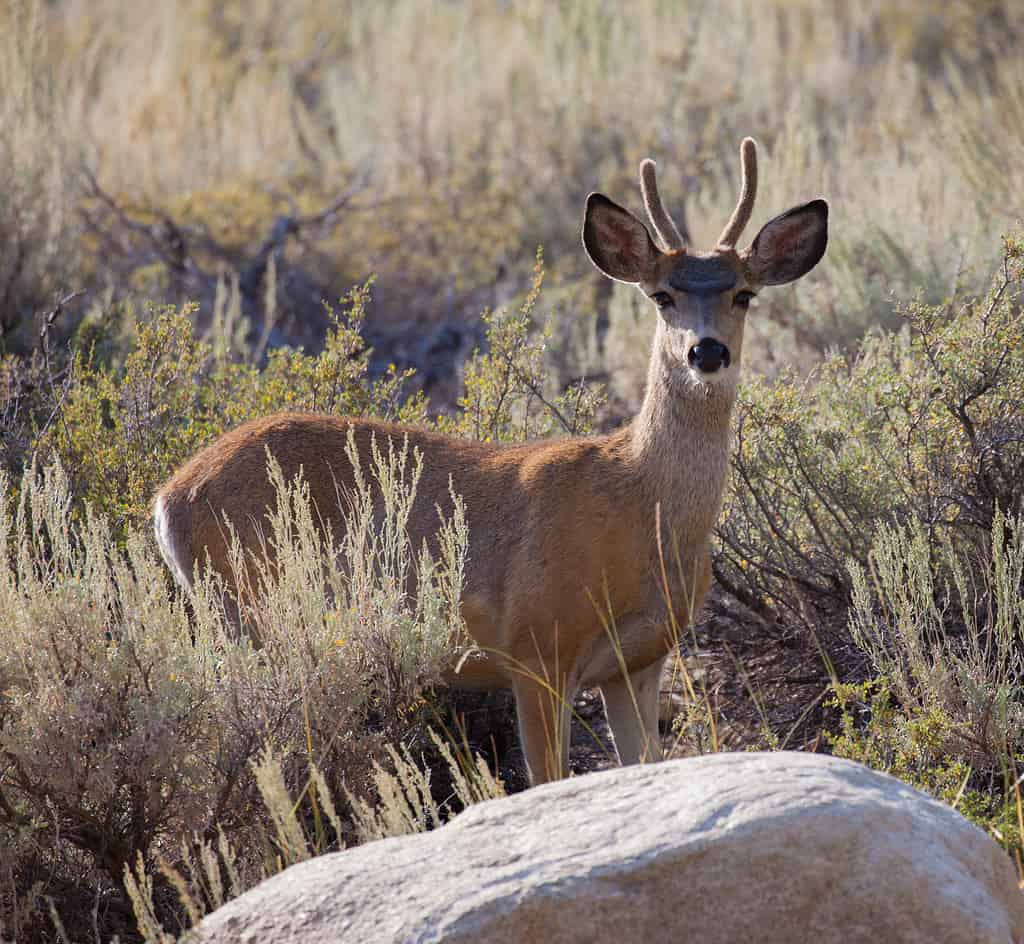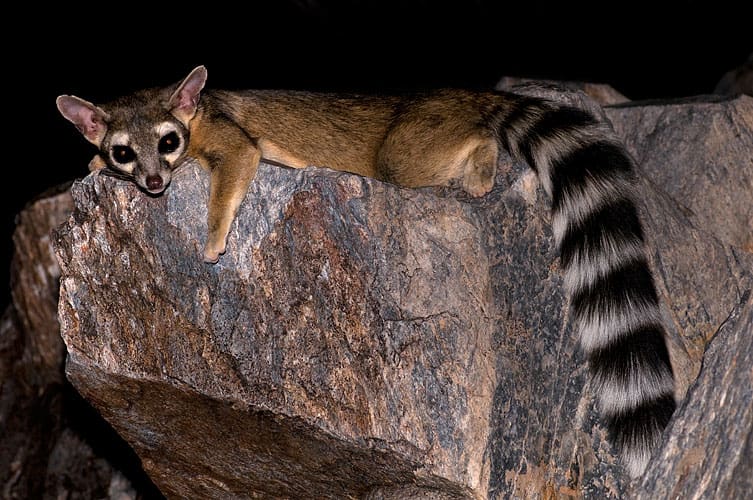Traveling to the coastal Mexican state of Baja California? Featuring stunning beaches, forests, shrublands, mountains, and deserts, this land is home to diverse, enduring lifeforms.
If you’re exploring this stunning coastal state, you may be interested in visiting the highest point in Baja California. In this guide, we’ll discover the state’s highest point, provide some information on hiking in the area, and describe some of the wildlife found there.
Read on to learn more.
The Highest Point in Baja California: Picacho del Diablo
The highest point on the Baja California peninsula is Picacho del Diablo (Devil’s Peak). Its peak measures 10,157 feet above sea level. This mountain peak is part of the Sierra de San Pedro Mártir Peninsular Ranges. The stunning land of Picacho del Diablo is defined by an ecosystem of canyons and gullies covered in a rich array of desert flora. The rocks of the area are largely Mesozoic granite. The present form of the Sierra San Pedro Mártir developed in the last 5-10 million years from the Cretaceous-era collision of the North American and the Pacific Plate.
The highest point in Baja California is situated roughly in the center of the state, between the Pacific Ocean to the west and the Gulf of California to the east. The desert ecosystem of this mountain is situated in a unique environment in which only about 3 miles to the west exists a vast pine forest and meadow landscape.

Picacho del Diablo represents the highest point in Baja California, measuring 10,157 feet above sea level.
©Pablo Garcia Saldana/Shutterstock.com
Hiking the Highest Point in Baja California
Widely considered a highly difficult trail, the Picacho del Diablo hike challenges summit hikers with a grueling ascent. The trail takes an average of 15 hours and 30 minutes for experienced hikers to complete, with many folks choosing to break up the scrambling ascent into a two to three-day backpacking adventure. The peak is located within the Sierra de San Pedro Mártir National Park. The Sierra Club Desert Peaks section lists three Mexican peak hikes in their guide, with Picacho del Diablo considered the most strenuous.
Most travelers attempt the summit hike in the spring or fall on a 22.2-mile out-and-back trail. The winter can be quite cold in the area and hiking in the summer heat of the desert environment creates a much more treacherous environment. Sturdy footwear, solid backcountry navigation, boulder scrambling skills, a first aid kit, an abundance of water, and nourishing food are essentials for the route. Guides do not recommend attempting this hike alone and setting up a secure bail-out plan is an excellent idea.

The highest point in Baja California is located within the Sierra de San Pedro Mártir National Park. The hike to the summit of Picacho del Diablo is considered difficult and grueling, especially the second half of the hike.
©hernandezvalda/Shutterstock.com
Animals of the Highest Point in Baja California
While wildlife is sparse at the rocky summit of Picacho del Diablo’s 10,157-foot peak, many animals live throughout the Sierra de San Pedro Mártir National Park and the lower elevations of Picacho del Diablo. Below, we’ll talk about some of the amazing animals you might encounter in this stunning ecosystem. Remember when visiting to leave as little trace as possible to protect this amazing environment.
Coyote (Canis latrans)
The hardy, crafty coyote (Canis latrans) is a common sight for hikers navigating the Picacho del Diablo summit trail. These intelligent canids exist across the varying ecosystems of Baja California. As non-specialist omnivorous scavengers and hunters, coyotes can adapt to a vast range of environments. Around Picacho del Diablo, coyotes hunt and scavenge the carcasses of rodents, lizards, snakes, insects, hares, and birds. They also feed on cactus fruit, mesquite beans, and other fruit and vegetation of desert flora.
Coyotes that inhabit desert environments such as the landscape of Picacho del Diablo tend to be small and lean. Most adult individuals weigh between 18-25 pounds and measure about 25 inches tall at the shoulders. On average, they measure about 4-5 feet in length. Their bushy tail makes up about 1/3rd of that length. Their coat color is typically light brown, red-brown, or gray.

Desert coyotes are right at home in the arid environment of the highest point in Baja California.
©Warren Metcalf/Shutterstock.com
Mule Deer (Odocoileus hemionus)
A common native deer species of western North America is the mule deer (Odocoileus hemionus). These hardy deer thrive in rocky, arid, and shrubby environments. Mule deer are highly adept in mountainous terrain and can traverse rocky, mountainous environments up to about 13,000 feet above sea level. They often move up and down the elevations of Picacho del Diablo depending on the season and food availability.
Mule deer are primarily browsers, feeding on plant vegetation, twigs, and fruits. In the Picacho del Diablo area, the main predators of mule deer are cougars, bobcats, and coyotes. Bobcats and coyotes primarily hunt fawns and sick, weakened individuals while cougars are much more capable of taking down healthy, adult mule deer.

Mule deer inhabit semi-arid and arid environments. Around Picacho del Diablo, they primarily live in areas with an abundance of shrubby vegetation.
©epantha/iStock via Getty Images
North American Ringtail (Bassariscus astutus)
An elusive, nocturnal animal, the North American ringtail (Bassariscus astutus) is an adorable and interesting predator of the Picacho del Diablo ecosystem. A part of the raccoon family (Procyonidae), the ringtail features a slender, weasel-like body with notably large eyes and a long, bushy, ringed tail. These animals prefer environments featuring canyons, and rocky outcroppings and slopes. They thrive in arid and semi-arid environments. These slender animals tend to weigh only 2-3 pounds. They typically measure 24-35 inches long, with their stunning tails accounting for half their length.
Non-specialist omnivores and ringtails eat a wide variety of foods. They hunt, scavenge, and forage. Birds, rodents, reptiles, amphibians, carrions, and insects form the bulk of their diet. They also feed on fruits and berries. In the area around Picacho del Diablo, they likely feed on prickly pear cactus fruit to supplement hunting and scavenging animals.

The North American ringtail is a nocturnal, omnivorous mammal in the raccoon family (
Procyonidae). In the Picacho del Diablo ecosystem, they feed primarily on a range of rodents, reptiles, insects, and birds.
©Robertbody at en.wikipedia / CC BY-SA 3.0 – Original / License
Pallid Bat (Antrozous pallidus)
Baja California is home to a rich, diverse array of over 25 bat species. The majority of these species are insectivores. The pallid bat (Antrozous pallidus) occurs across most of the Baja California peninsula. This species can inhabit arid regions up to 10,000 feet above sea level. Around the highest point in Baja California, they tend to live among rocky outcroppings and canyons.
Primarily insectivorous, the pallid bat specialized mostly on ground-dwelling insects. This feeding strategy is fairly unique among most insectivorous bats that focus on hunting flying insects. Instead, the pallid bat eats insects such as spiders, cicadas, scorpions, centipedes, beetles, and grasshoppers. In addition to munching on insects, the pallid bat is also known to feed upon the flower nectar and fruits of the prickly pear cactus.
The pallid bat features large, rounded ears, an adorably blunt snout, and a pale brown body. The fur covering their back is beige-brown while the underside fur is almost white. The wingspan of the pallid bat typically measures 15-15 inches across and adults can weigh 20-35 grams. These voracious hunters can eat half of their body weight in one night of hunting. They also feature a distinctive, skunk-like odor.

The pallid bat primarily hunts ground-dwelling insects in arid regions. This species commonly occurs across much of Baja California, including the area around Picacho del Diablo.
©Danita Delimont/Shutterstock.com
The photo featured at the top of this post is © Pablo Garcia Saldana/Shutterstock.com
Thank you for reading! Have some feedback for us? Contact the AZ Animals editorial team.







